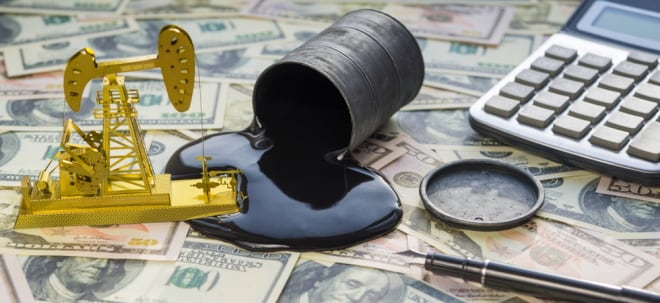Biden signs executive order to power-up AI infrastructure
Werte in diesem Artikel
U.S. President Joe Biden issued an executive order Tuesday to support the development of the country’s artificial intelligence infrastructure and meet the enormous energy requirements from AI data centres in the years ahead.The historic executive order—issued in the last days of the Biden-Harris administration—directs the Department of Defense and the Department of Energy to lease federal sites where the private sector “can build frontier AI infrastructure at speed and scale,” Biden said, including new clean power facilities, all of which will enhance national security.Among the measures outlined in the executive order are facilitating AI infrastructure’s interconnection to the electric grid, fulfilling permitting obligations more quickly, and advancing transmission development around federal sites.“We will not let America be out-built when it comes to the technology that will define the future,” Biden said in a White House statement. “These efforts also will help position America to lead the world in clean energy deployment in the context of strategic competition abroad.”The push for data centre storage power is set to boost mining for energy transition metals such as silver for solar panels, copper for wiring, and lithium, cobalt, manganese, iron, nickel and vanadium for batteries. Aluminum is used in transmission lines. Zinc, lead and graphite are also found in batteries. Steel from iron and molybdenum is used in most buildings, wind farms and grid towers. Coking coal helps make steel and copper. Estimates abound about the scores of new mines needed to replace fossil fuels. Power deficitElectricity consumption by U.S. data centers alone is growing at an accelerating pace. It posted a compound annual growth rate of about 18% between 2018 and 2023, up from 7% between 2014 and 2018, and is forecast to range from 13% to 27% between 2023 and 2028, according to the Lawrence Berkeley National Laboratory, a research and development center funded by the U.S. Department of Energy.By 2018 data centres in the U.S. consumed about 76 terawatt hours (TWh) annually, or about 1.9% of total annual electricity consumption in the US each year. That number rose to 176 TWh by 2023, or 4.4% of total US electricity consumption, according to a new report on 2024 data center energy usage released in December. The report defined data center electricity use as including servers, storage, network equipment and infrastructure.Based on various scenarios, total data centre energy estimates range from a low of roughly 325 TWh to 580 TWh by 2028, according to the report.“Assuming an average capacity utilization rate of 50%, this annual energy use range would translate to a total power demand for data centres between 74 and 132 GW. This annual energy use also represents 6.7% to 12% of total U.S. electricity consumption forecasted for 2028.”In May, Duke Energy, one of the largest energy holding companies in the U.S. with 54,800 megawatts of collective energy capacity, signed initial agreements to develop new electricity rate structures—also known as tariffs—to advance the development of carbon-free technologies, including SMRs and long-duration energy storage.Geo-thermal projects are also gaining favour. Several years ago, Google partnered on a geo-thermal project with developer Fervo Energy in Nevada. In November, power from the project started flowing to Google’s data centres.Going nuclearWhile the world soured on nuclear energy in 2011 following the Fukushima nuclear disaster in Japan, it has slowly come back into vogue with rising demand for reliable and carbon-free power. And tech giants scrambling to secure clean power for their AI ambitions are embracing the fuel source.In September, Microsoft signed a 20-year purchase power agreement with Constellation Energy that would see the restart of one reactor at Three Mile Island, the site of the worst nuclear accident in the country’s history. (The Unit 1 reactor was not affected by the partial meltdown at the neighboring Unit 2 reactor.)Constellation, which produces about one-fifth of U.S. nuclear power, will spend US$1.6 billion to resuscitate the undamaged Unit 1 reactor at the Pennsylvania plant. Under the agreement, the reactor is expected to start delivering power in 2028.Investments in nuclear energy will be positive for uranium, consultants like Atlanta-based UxC say. It estimates that 150 new nuclear reactors will be built between 2024 and 2035, and of those, 80-90 will be in China. At current production rates, the uranium market data firm says, there won’t be enough uranium to meet demand by 2030-2035.Uranium prices have nearly tripled in the last three years.Small reactorsSmall modular reactors (SMRs) are becoming a new buzzword in board rooms across North America. The new class of reactors come in a range of sizes and can be put together in a factory.Last October, Google signed a deal to buy nuclear energy from multiple small modular reactors (SMRs) that will be developed by San Francisco-based Kairos Power. Under the initial stage, the first SMR will be brought on-line by 2030, followed by additional reactors through 2035.“Overall, this deal will enable up to 500 MW of new 24/7 carbon-free power to U.S. electricity,” Michael Terrell, Google’s senior director of energy and climate, wrote in a blog on the company website.“The next generation of advanced nuclear reactors offers a new pathway to accelerate nuclear deployment tanks to their simplified design and robust, inherent safety. The smaller size and modular design can reduce construction timelines, allow deployment in more places, and make the final project delivery more predictable.”Amazon has also signed deals to develop nuclear power. The company said in October that it had an agreement with Energy Northwest, a consortium of state public utilities in Washington state. Energy Northwest is to build and operate four advanced SMRs, which are expected to generate 320 MW of capacity during the project’s first stage with the option to boost that to a total of 960 MW—or enough electricity to power more than 770,000 homes.North AnnaIn Virginia, Amazon signed a deal with Dominion Energy to explore the development of an SMR project near the utility company’s North Anna nuclear power station. The project would deliver at least 300 MW of power to the Virginia region.In a third deal, the tech giant invested in X-energy, which is developing next-generation SMR reactors and fuel. The two companies will collaborate to bring more than 5 gigawatts of new power projects online across the U.S. by 2039.“This collaboration between Amazon and X-energy is a significant step toward accelerating advanced nuclear technologies that can help us bring new sources of carbon-free energy to the grid cost-effectively and safely,” Kevin Miller, Amazon’s vice president global data centres, said in a news release.At Oracle, Executive Chairman Larry Ellison told a first-quarter 2024 results conference call with analysts that the company had secured building permits for three SMRs to help power a data centre.Weiter zum vollständigen Artikel bei Mining.com
Ausgewählte Hebelprodukte auf Ai
Mit Knock-outs können spekulative Anleger überproportional an Kursbewegungen partizipieren. Wählen Sie einfach den gewünschten Hebel und wir zeigen Ihnen passende Open-End Produkte auf Ai
Der Hebel muss zwischen 2 und 20 liegen
| Name | Hebel | KO | Emittent |
|---|
| Name | Hebel | KO | Emittent |
|---|
Quelle: Mining.com
Nachrichten zu Ai Holdings Corp
Analysen zu Ai Holdings Corp
Keine Analysen gefunden.

